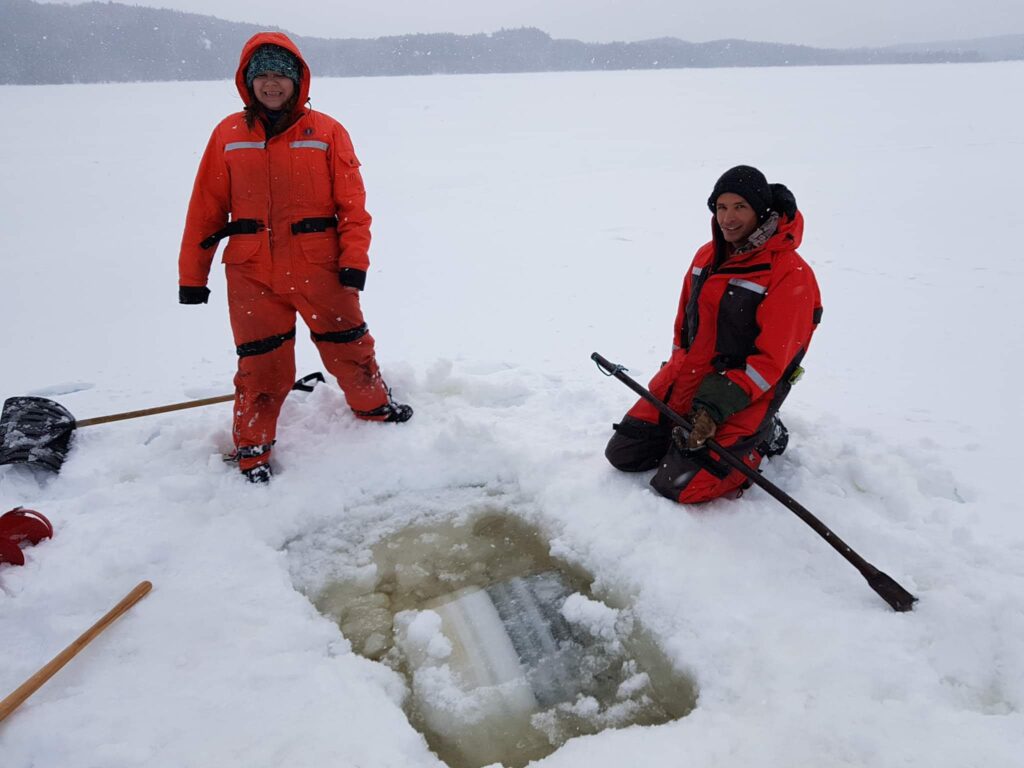Novel methods will yield rich data to improve resource protection
Freshwater fish are an important economic and cultural resource to Canadians. Recent research indicates, however, that some recreational fisheries may be struggling. Managers are unsure whether fish production is declining in Canada’s inland lakes, especially in the context of warming temperatures that are affecting fish and their habitats. This project will address this knowledge gap using an easily measured variable — lake size — to predict fish habitat use and production.
The research team is capturing detailed data on fish habitat use and diet using acoustic telemetry and stable isotopes continuously over all seasons and multiple years. These two methods will allow scientists to understand what the fish are eating, where they are finding their food (i.e., lake bottom versus water column), and where and when they are moving. The team is focusing on three species of fish with recreational and cultural value: lake trout (Salvelinus namaycush), cisco (Coregonus artedi), and smallmouth bass (Micropterus dolomieu). This approach will, for the first time, measure habitat and diet overlap among these three species across seasons and over 5 years in a small, intermediate and large lakes. The results will provide fisheries managers with the ability to predict how fish habitat use and production change over time (seasonally and interannually) and vary from small to large lakes. This information could lead to new fisheries management methods and policies that will benefit all Canadians by helping protect freshwater fishes into the future.

This work is begin funded by a new $462,000 Alliance grant, the first for University of Toronto Mississauga under NSERC’s new Option 2 program, which encourages university researchers to collaborate with organizations from the private, public or not-for-profit sectors — in this case Ontario’s Ministry of Natural Resources and Forestry. In addition to equipment, the funds will support five graduate students and a summer crew of undergraduates and members of the Algonquins of Ontario Indigenous community.
Bailey McMeans, University of Toronto Mississauga, is leading this project in collaboration with University of Windsor’s Aaron Fisk, University of Toronto Scarborough’s Mathew Wells, Queen’s University’s Paul Blanchfield and University of Guelph’s Kevin McCann. Other collaborators include Tyler Tunney of Fisheries and Oceans Canada and Mark Ridgway, director of the Harkness Laboratory for Fisheries Research, which is collecting the data.
For more information, please contact Dr. Bailey McMeans
